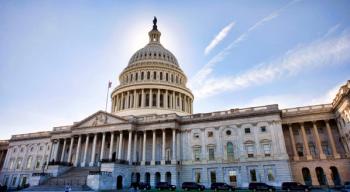
Healthcare reform campaign faces big hurdles
The economy trumps all for President-elect Obama, so healthcare spending must be re-examined if programs stand any chance of succeeding
That said, the need to address rising unemployment and slow economic growth may force Obama to seek more limited health policy changes in the short term. The soaring federal budget deficit also will intensify the hunt for ways to cut healthcare spending, an exercise likely to squeeze insurance operations.
CHILDREN FIRST
Expanding SCHIP and Medicaid would be a first step in fulfilling Obama's promise to provide healthcare for every child. Moving some 25 million people off the uninsured rolls will be more difficult. Obama has proposed to mandate that large and medium employers support "meaningful" insurance for workers or pay into a fund. Those without work-based coverage and small employers would gain subsidies and access to private insurance options or a government-sponsored National Health Plan through a National Insurance Exchange.
To offer plans through the Exchange, insurers will have to provide comprehensive benefits and meet standards for quality and efficiency. Plans also will have to issue coverage to all applicants and to set premiums without regard to health status, a policy predicted to raise the cost of insurance for young and healthy individuals.
CUTTING COSTS
Achieving these changes will be challenging-and expensive. The Obama reform proposal was pegged to cost between $1.2 trillion and $1.6 trillion over 10 years (2010 to 2019). Paying the bill without adding to a soaring federal budget deficit will require serious cost-cutting.
Like his opponents, Obama has a list of savings options. Expanding health information technology would net $60 billion over 10 years. There are potential savings from expanded DM programs, coordinated care models and P4P initiatives. And the president-elect has jumped on the comparative effectiveness bandwagon, predicting that research on the relative effectiveness of alternate treatments would cut costs by reducing unnecessary care.
Because these strategies yield little in the way of near-term savings, a more popular tactic will be to cut government outlays to insurers and drug makers. Democrats want to eliminate "excess" payments to Medicare Advantage plans, a change Obama says would save $135 billion. And the reformers propose to revoke the Medicare "non-interference clause." Direct negotiation of payments for drugs covered by Medicare plans is predicted to save about $20 billion, but it also could raise plan costs and limit insurer flexibility in offering drug plans with differences in formulary coverage, copayments and premiums.
Newsletter
Get the latest industry news, event updates, and more from Managed healthcare Executive.






















































